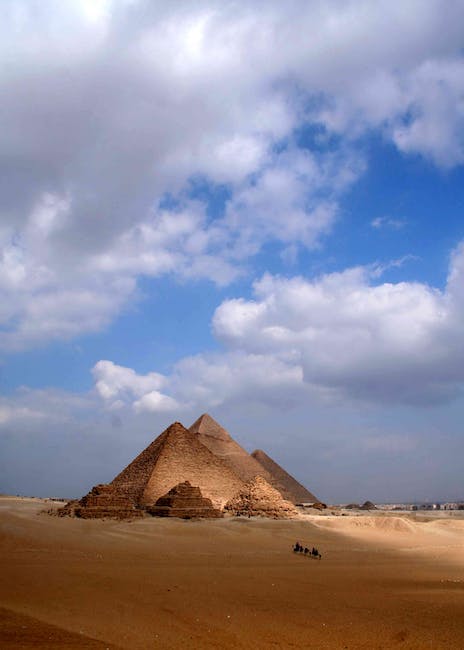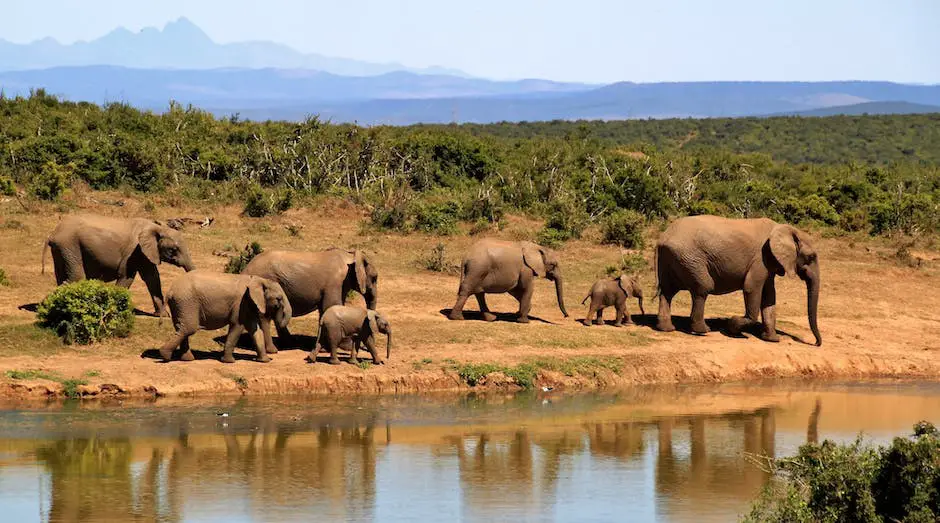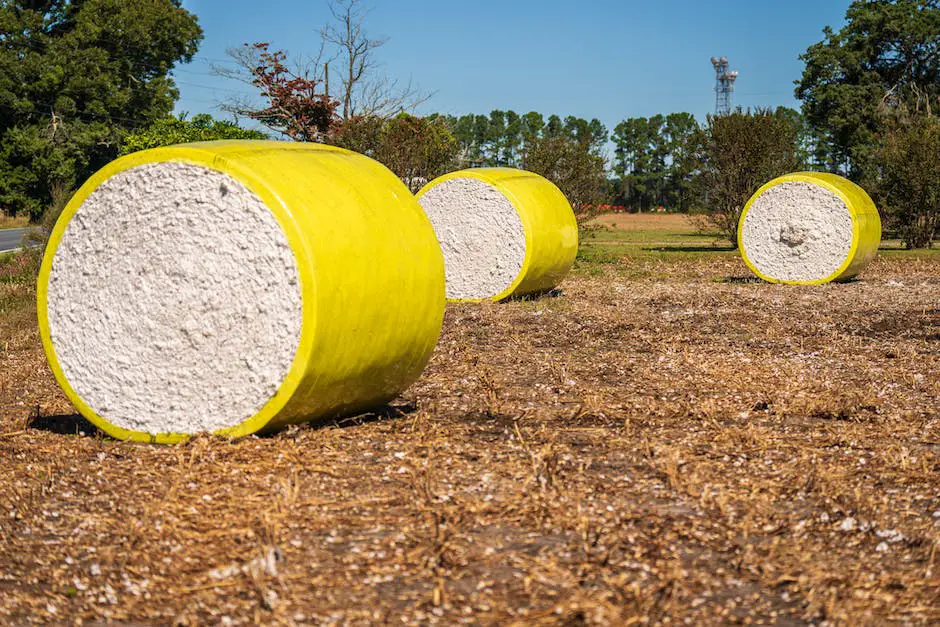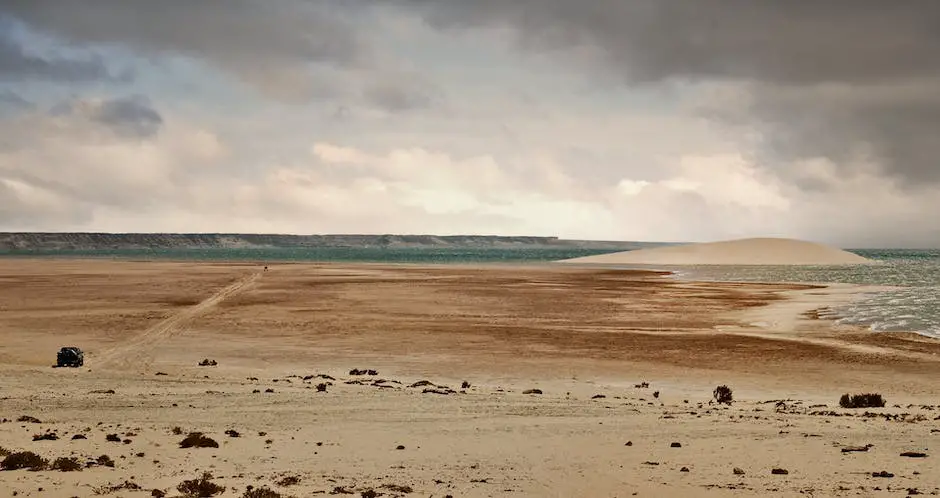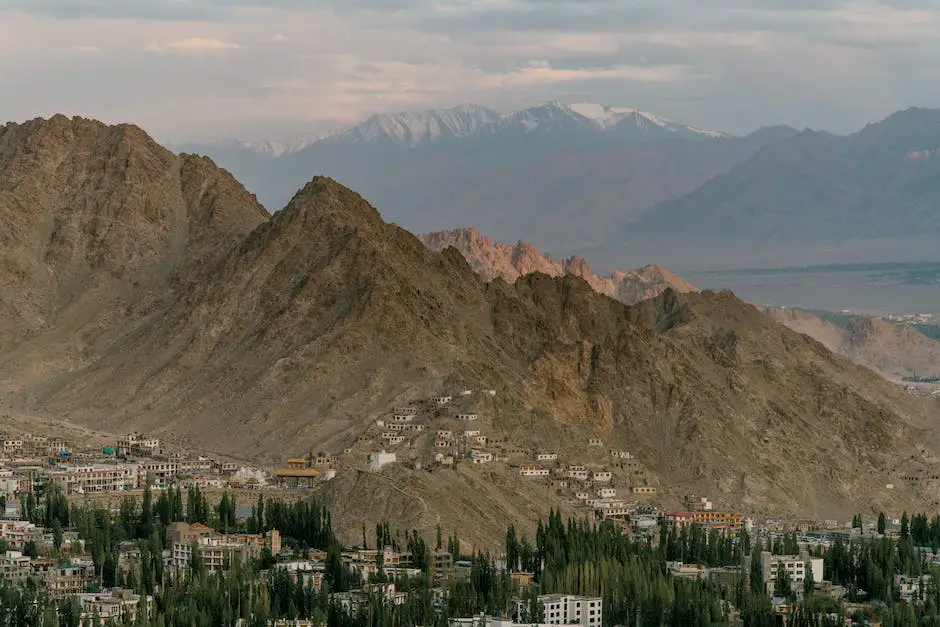-
Table of Contents
- Introduction
- The Impact of Drought on South Africa’s Tourism Industry
- Strategies for Managing the Effects of Drought on Tourist Attractions in South Africa
- How Climate Change is Contributing to Drought and its Effect on Tourism in South Africa
- Innovative Solutions for Water Conservation in the Hospitality Sector During a Drought
- The Role of Government and Private Sector Collaboration in Mitigating the Negative Effects of Drought on Tourism in South Africa
- Q&A
- Conclusion
Introduction
Drought is a natural disaster that can have significant impacts on various sectors, including tourism. South Africa, known for its diverse landscapes and wildlife, has experienced severe droughts in recent years. This has raised concerns about the potential effects of drought on the country’s tourism industry. In this article, we will explore how drought affects tourism in South Africa and what measures are being taken to mitigate these impacts.
The Impact of Drought on South Africa’s Tourism Industry
South Africa is a country that boasts of diverse landscapes, rich wildlife, and vibrant cultures. It has been a popular tourist destination for many years, attracting millions of visitors annually. However, the country’s tourism industry has been facing significant challenges in recent times due to drought.
Drought is a natural disaster that occurs when there is an extended period of below-average precipitation in an area. South Africa has experienced several severe droughts over the past few years, with some regions experiencing their worst drought in decades. The impact of these droughts on the country’s tourism industry cannot be overstated.
One way that drought affects tourism in South Africa is by reducing water availability for tourists’ use. Many tourists come to South Africa to enjoy its beautiful beaches and participate in water-based activities such as swimming and surfing. However, during periods of severe drought, water levels can drop significantly or even dry up completely, making it impossible for tourists to engage in these activities.
In addition to limiting access to water-based activities, drought also affects wildlife viewing opportunities negatively. Wildlife reserves are one of the main attractions for tourists visiting South Africa; however, during periods of prolonged dry spells animals tend to migrate away from areas where they would usually be found looking for food and water sources elsewhere which makes it difficult for visitors who want to see them.
Another way that drought impacts tourism is through reduced agricultural production leading farmers unable produce enough crops or livestock products like meat and dairy products which means less fresh produce available at restaurants resulting into higher prices charged by hotels and restaurants thus discouraging potential visitors from coming back again
Furthermore,drought leads to increased risk of wildfires which poses danger not only on human life but also destroys vegetation cover affecting scenic beauty hence reducing attractiveness as well as safety concerns among potential travelers .
The effects mentioned above have ripple effects throughout the entire economy since Tourism plays a vital role in contributing towards economic growth through job creation , foreign exchange earnings , infrastructure development and other multiplier effects. Therefore, the impact of drought on tourism can be felt across various sectors of the economy.
In conclusion, drought has a significant impact on South Africa’s tourism industry. It affects water availability for tourists’ use, wildlife viewing opportunities and agricultural production leading to higher prices charged by hotels and restaurants which discourages potential visitors from coming back again. Additionally, it poses safety concerns due to increased risk of wildfires that destroy vegetation cover affecting scenic beauty hence reducing attractiveness as well as safety concerns among potential travelers . The government needs to take proactive measures such as investing in water conservation technologies and promoting alternative tourist activities during periods of drought to mitigate these impacts and ensure that South Africa remains an attractive destination for tourists worldwide.
Strategies for Managing the Effects of Drought on Tourist Attractions in South Africa
South Africa is a country that boasts of diverse tourist attractions, ranging from wildlife reserves to beautiful beaches and cultural heritage sites. However, the country has been experiencing drought in recent years, which has had significant effects on its tourism industry. Drought affects tourism by reducing the availability of water for tourists’ use and causing damage to natural attractions such as parks and reserves.
To manage the effects of drought on tourist attractions in South Africa, various strategies have been put in place. One strategy is water conservation measures aimed at reducing water usage by both tourists and locals. These measures include encouraging visitors to take shorter showers, turning off taps when not in use, and using recycled or greywater for non-potable uses like watering gardens.
Another strategy is investing in alternative sources of water such as desalination plants or rainwater harvesting systems. Desalination plants are used to convert seawater into freshwater while rainwater harvesting involves collecting rainwater from rooftops or other surfaces for later use.
Tourist attraction managers can also implement sustainable practices that reduce their reliance on natural resources like water. For instance, they can adopt renewable energy sources like solar power instead of relying solely on electricity generated from fossil fuels.
In addition to these strategies, it’s essential to educate tourists about the importance of conserving natural resources during their visits. This education can be done through signage at tourist sites or brochures distributed at hotels and airports.
Furthermore, collaboration between government agencies responsible for managing tourist attractions and local communities can help mitigate the impact of droughts on tourism activities. Local communities play a crucial role in preserving natural resources since they live near them; hence involving them will ensure that they understand how important it is to conserve these resources.
Finally, diversifying tourism products beyond those reliant on abundant water supply could help cushion against losses caused by droughts. For example, promoting cultural heritage sites that do not require much water could attract more visitors who may be interested in learning about South Africa’s rich history.
In conclusion, drought has significant effects on tourism in South Africa. However, implementing strategies such as water conservation measures, investing in alternative sources of water, adopting sustainable practices and educating tourists can help manage the impact of droughts on tourist attractions. Collaboration between government agencies responsible for managing tourist sites and local communities is also crucial to ensure that natural resources are conserved. Diversifying tourism products beyond those reliant on abundant water supply could also help cushion against losses caused by droughts. By taking these steps, South Africa can continue to attract visitors while preserving its natural resources for future generations.
How Climate Change is Contributing to Drought and its Effect on Tourism in South Africa
South Africa is a country that boasts of diverse landscapes, rich wildlife, and vibrant cultures. It has been a popular tourist destination for many years, attracting millions of visitors annually. However, the country’s tourism industry has been facing significant challenges in recent times due to drought caused by climate change.
Climate change is one of the biggest threats facing our planet today. Its effects are being felt all over the world, with some regions experiencing more severe impacts than others. South Africa is one such region that has been hit hard by climate change-induced droughts.
Drought occurs when there is an extended period of time with little or no rainfall. This can lead to water shortages and crop failures, which can have devastating effects on communities and economies alike. In South Africa, droughts have become more frequent and severe in recent years due to climate change.
The impact of these droughts on tourism cannot be overstated. Tourism relies heavily on natural resources such as water bodies, forests, and wildlife reserves – all of which are affected by droughts. For example, during periods of low rainfall, rivers dry up or become too shallow for activities like white-water rafting or fishing trips.
Wildlife reserves also suffer during times of drought as animals struggle to find food and water sources become scarce. This makes it difficult for tourists who come to see these animals in their natural habitats since they may not be able to spot them easily.
Furthermore, agriculture plays a crucial role in supporting local economies around tourist destinations through providing fresh produce for restaurants and markets; however this sector suffers greatly from prolonged periods without rain leading to reduced yields resulting in higher prices making it less accessible for locals let alone tourists
In addition to affecting outdoor activities like safaris or hiking trails ,drought also affects indoor attractions such as museums where air conditioning systems require large amounts of water usage .This leads either increased costs passed onto consumers or closure altogether .
Tourism businesses themselves are also impacted by droughts. Hotels and lodges may have to reduce their water usage or even close down temporarily if there is not enough water available for guests. This can lead to a loss of revenue and jobs, which can have ripple effects throughout the local economy.
To mitigate these impacts, tourism businesses in South Africa are taking steps to become more sustainable and resilient in the face of climate change. Many hotels and lodges are implementing water-saving measures such as low-flow showerheads, rainwater harvesting systems, and greywater recycling.
Tourism operators are also diversifying their offerings by including indoor activities that do not rely on natural resources like museums or cultural tours .This helps ensure that tourists still have options when outdoor activities are limited due to drought conditions.
In conclusion ,drought caused by climate change has significant implications for South Africa’s tourism industry. It affects both natural attractions like wildlife reserves as well as indoor attractions such as museums .It also impacts agriculture which supports local economies around tourist destinations through providing fresh produce for restaurants and markets; however this sector suffers greatly from prolonged periods without rain leading to reduced yields resulting in higher prices making it less accessible for locals let alone tourists .
Despite these challenges, many tourism businesses in South Africa are adapting to become more sustainable and resilient in the face of climate change. By implementing water-saving measures, diversifying their offerings ,and supporting local communities they hope to continue attracting visitors while minimizing negative environmental impact .
Innovative Solutions for Water Conservation in the Hospitality Sector During a Drought
South Africa is a country that relies heavily on tourism as one of its major sources of revenue. However, the country has been experiencing severe droughts in recent years, which have had a significant impact on the tourism industry. Drought affects not only the availability of water but also other resources such as food and energy. In this article, we will explore how drought affects tourism in South Africa and innovative solutions for water conservation in the hospitality sector during a drought.
Drought can lead to reduced water levels in rivers and dams, resulting in limited access to clean drinking water for tourists. This can be particularly challenging for hotels and lodges that rely on large amounts of water to provide services such as swimming pools, laundry facilities, and showers. The lack of adequate water supply may force these establishments to reduce their services or even close down temporarily.
In addition to affecting access to clean drinking water, drought can also affect wildlife viewing opportunities for tourists visiting game reserves. During periods of prolonged dry spells, animals tend to congregate around watering holes making it easier for visitors to spot them. However, if there are no watering holes due to low rainfall levels or drying up completely because they were overused by humans before the drought began then animal sightings become less frequent.
Furthermore, food production is affected by drought leading restaurants having difficulty sourcing fresh produce locally which could result in higher prices being passed onto customers who may choose alternative destinations with more affordable options available instead.
To mitigate these challenges faced by businesses within the hospitality sector during times of drought innovative solutions must be implemented so that they do not lose out financially while still providing quality service offerings despite limited resources available at hand.
One solution is rainwater harvesting systems installed at hotels and lodges where rainwater collected from rooftops is stored underground tanks used later when needed reducing reliance on municipal supplies thereby conserving precious natural resources like freshwater sources which are already under pressure due climate change impacts including increased temperatures causing evaporation rates to rise.
Another solution is the use of greywater systems which recycle wastewater from showers, sinks and washing machines for irrigation purposes. This reduces the amount of freshwater needed for landscaping and gardening while also reducing water bills significantly.
In addition, hotels can implement energy-efficient practices such as using solar panels or wind turbines to generate electricity instead of relying on fossil fuels that contribute to climate change. These renewable sources are not only environmentally friendly but also cost-effective in the long run.
Furthermore, businesses within the hospitality sector can educate their guests about water conservation by providing information on how they can reduce their own water usage during their stay. Simple measures like turning off taps when brushing teeth or taking shorter showers go a long way in conserving precious resources.
In conclusion, drought has a significant impact on tourism in South Africa with reduced access to clean drinking water affecting both wildlife viewing opportunities and services provided by hotels and lodges. However, innovative solutions such as rainwater harvesting systems, greywater recycling systems and energy-efficient practices can help mitigate these challenges faced by businesses within the hospitality sector during times of drought while still providing quality service offerings despite limited resources available at hand. By educating guests about water conservation measures we all play our part in preserving this precious resource for future generations.
The Role of Government and Private Sector Collaboration in Mitigating the Negative Effects of Drought on Tourism in South Africa
South Africa is a country that relies heavily on tourism as one of its major sources of revenue. However, the country has been experiencing drought for several years now, which has had a significant impact on the tourism industry. Drought affects various aspects of tourism in South Africa, including wildlife viewing, water-based activities such as swimming and fishing, and agricultural tours.
The government and private sector have recognized the negative effects of drought on tourism in South Africa and are working together to mitigate these effects. Collaboration between these two sectors is essential to ensure that tourists continue to visit the country despite the challenges posed by drought.
One way in which collaboration between government and private sector can help mitigate the negative effects of drought on tourism is through water conservation efforts. The government can implement policies aimed at reducing water usage while businesses can adopt sustainable practices such as recycling wastewater or using rainwater harvesting systems.
Another way in which collaboration can help is through marketing campaigns that promote alternative tourist attractions not affected by drought. For example, instead of promoting wildlife viewing during dry seasons when animals migrate away from areas with limited water resources, tour operators could focus on cultural experiences or scenic drives.
Furthermore, collaboration between government and private sector can lead to investment in infrastructure projects that improve access to alternative tourist attractions. This includes building new roads or upgrading existing ones leading to destinations unaffected by droughts such as national parks with perennial rivers or coastal towns with beaches.
In addition to mitigating the negative effects of drought on tourism through collaborative efforts between government and private sector players; there are other measures both parties should take independently:
Government
The government should invest more resources into research aimed at understanding how climate change will affect different regions within South Africa so they can develop appropriate strategies for managing future risks associated with natural disasters like floods or wildfires caused by prolonged periods without rainfall due mainly because we rely too much upon fossil fuels rather than renewable energy sources like solar power generation plants;
Private Sector
On their part, the private sector should invest in sustainable tourism practices that reduce their carbon footprint and promote environmental conservation. This includes adopting eco-friendly technologies such as solar-powered water heaters or electric vehicles for transportation.
In conclusion, drought has had a significant impact on tourism in South Africa, but collaboration between government and private sector players can help mitigate these effects. By investing in infrastructure projects that improve access to alternative tourist attractions, promoting sustainable tourism practices, and implementing policies aimed at reducing water usage; both parties can ensure that tourists continue to visit the country despite the challenges posed by droughts.
Q&A
1. How does drought affect tourism in South Africa?
Drought can negatively impact tourism in South Africa by reducing the availability of water for recreational activities and wildlife viewing, as well as causing dry and unattractive landscapes.
2. What are some specific examples of how drought affects tourism in South Africa?
Some specific examples include reduced water levels at popular tourist destinations such as Victoria Falls and Cape Town’s beaches, decreased wildlife sightings due to animals migrating to areas with more water, and increased risk of wildfires which can damage natural attractions.
3. Are there any positive effects of drought on tourism in South Africa?
There may be some positive effects of drought on certain types of tourism such as adventure or cultural tours that do not rely heavily on access to water-based activities or lush landscapes.
4. How do local businesses cope with the negative impacts of drought on tourism?
Local businesses may adapt by offering alternative experiences that are less affected by the lack of water, promoting eco-friendly practices to conserve resources, or diversifying their offerings beyond traditional tourist activities.
5. Is there anything being done to mitigate the impact of drought on tourism in South Africa?
Efforts are being made to improve infrastructure for sustainable use and management of water resources, promote responsible travel practices among tourists, and develop new technologies for efficient use and conservation of water in the hospitality industry.
Conclusion
Drought can have a significant impact on tourism in South Africa. The lack of water resources can lead to reduced availability of activities such as swimming, boating, and other water-based recreational activities. Additionally, drought can also affect the natural beauty of tourist destinations, leading to decreased interest from visitors. Overall, it is important for the government and tourism industry in South Africa to take measures to mitigate the effects of drought on tourism and ensure sustainable practices are implemented for long-term success.

